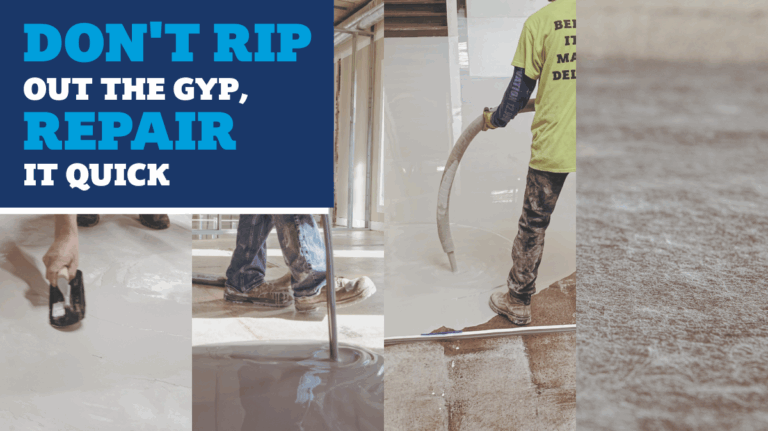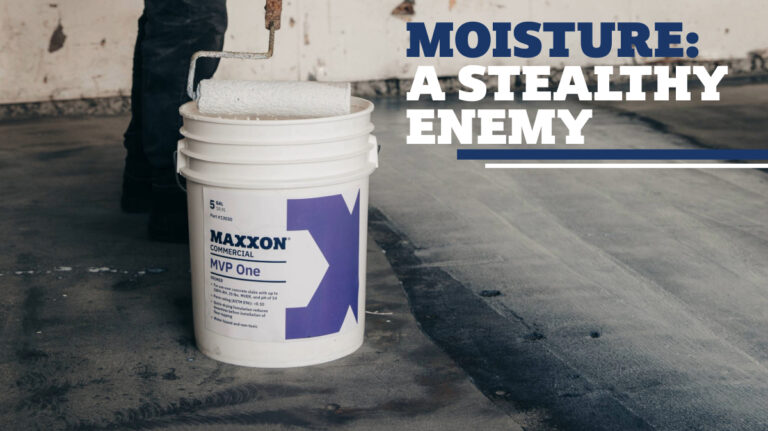Go Deep Before Specifying Topical Sound Mats

Driven by code requirements and occupant expectations, sound attenuation in multifamily properties is an increasingly important factor in building design and construction.
As the demand for sound control expands, new players have entered the market seeking to capitalize on greater opportunities, especially with topical sound mats.
While topical sound mats do serve a purpose, a more effective and proven acoustic isolation solution for wood-frame multifamily construction is an encapsulated sound control system. Encapsulated systems deliver significant advantages over topical sound mats, including superior sound control at both high- and low-frequencies, compatibility with all popular floor coverings, and consistent acoustical performance regardless of flooring updates or repairs. In addition, by encapsulating the sound mat in a gypsum underlayment, the sound control system becomes a permanent part of the building envelope that’s impervious to damage and never needs replacing.
Before specifying a topical sound mat for a wood-frame, multifamily project, consider the following:
What are the sound control expectations of occupants and owners?
Topical sound mats are less effective in mitigating low-frequency, impact-related sounds. This is especially true for popular hard-surface flooring such as LVT and LVP on typical wood frame construction where performance is constrained to slightly above International Building Code's (IBC) code minimum IIC rating. While topical mats may muffle the clicks of high heels, low-frequency impact noises, such as footfalls and dropped objects, can bleed through surface-applied sound mats. Since impact-related sounds are a common source of tenant complaints and turnovers, specifying a sound control solution proven to mitigate impact noise at the desired IIC rating can protect a project’s reputation and profitability by meeting occupant expectations.
What are the repair and renovation expectations of owners?
Because topical sound mats are glued or floated between a gypsum underlayment and finished flooring, they must be fully removed and replaced before updated finished flooring can be installed. This drives up the flooring renovation cost and timeline. In addition, any finished flooring changes negate the ability to predict future acoustical performance. Topical sound mats do not easily accommodate minor repairs. One section of worn or damaged flooring cannot simply be exchanged with a new flooring section. A new topical sound mat must be placed underneath the repair area. Attempting to retrofit one section of topical sound mat poses challenges to installation and sound control performance.
What are the flooring manufacturer’s requirements?
When specifying a sound control system, it is critical to follow the flooring manufacturer’s requirements to uphold the floor goods warranty. Deflection of topical sound mats may cause flooring failures, while some mats may cause discoloration and delamination of LVT and LVP flooring due to plasticizer migration. Plasticizer is a chemical combination added to certain topical sound mats during the manufacturing phase to make them more flexible. Over time the plasticizer can break down, migrate out, and negatively impact flooring performance.
How important is durability?
Topical sound mats are susceptible to compression and damage, both prior to flooring installation and from occupant disregard. Impossible to see under a finished floor, damaged topical sound mats are prone to flanking paths which hinder sound control performance and compromise code compliance.
Despite limitations, topical sound mats can be suited for the following applications:
Concrete Multifamily Construction
In concrete multifamily construction, the concrete satisfies fire code criteria so the fire-resistant gypsum underlayment is not needed from a fire code perspective. Compliance with acoustical codes in concrete multifamily properties, may be achievable with topical sound mats that meet the flooring manufacturer’s requirements and ceilings. In cases where ceilings are not desired, the higher isolation performance of an encapsulated mat under gypsum concrete may be needed.
Older Wood Frame Multifamily Renovations
Multifamily properties erected prior to 1996 did not incorporate sound control as code requirements were not widely recognized until 1997. Now, when these older multifamily buildings undergo renovations, they must be updated to comply with sound code. In these cases, a topical sound mat can help achieve code compliance when an encapsulated system is not feasible.
Combined with an Encapsulated System
In renovation projects where an encapsulated sound control system exists, a topical sound mat can be combined with the encapsulated system to elevate high-frequency sound control. This is especially useful in projects where developers are transforming market-rate buildings into luxury properties.

Maxxon: Delivering Over Three Decades of Encapsulated Expertise
As a leader in sound attenuation for buildings and the largest U.S. manufacturer of entangled mesh sound control products, Maxxon is a trusted expert in sound control solutions.
For multifamily construction, Maxxon’s encapsulated, Acoustic Isolation System provides proven, rated, and tested assemblies that meet or exceed code requirements for fire-safety and sound control while also accommodating floor goods manufacturers’ specifications.
includes Maxxon® Acousti-Mat® Sound Mat under Maxxon® Gyp-Crete® Gypsum Underlayment sealed with Maxxon® Acousti-Mat® Perimeter Isolation Strips. This comprehensive system protects the integrity of the entangled mesh sound mat by maintaining the air gap to dissipate low-frequency, acoustical energy. The solid mass of the gypsum underlayment blocks airborne sound transfer and provides a strong, smooth, flat surface for finished flooring, while the isolation strips optimize noise reduction and eliminate sound bleed of flanking paths.
Backed by 30+ years of field- and lab-tested performance, including more than 200 published sound tests and over 140 UL and ULC fire-resistance rated designs, Maxxon’s encapsulated Acoustic Isolation System delivers a proven, trusted, and permanent solution for optimal wood-frame multifamily sound control.
In comparison, topical sound mats merely scratch the surface of IIC code compliance and functionality.
For a detailed analysis of topical sound mats, access this technical bulletin.
Heard some buzz about board-style underlayments? Get the facts before getting stung.


